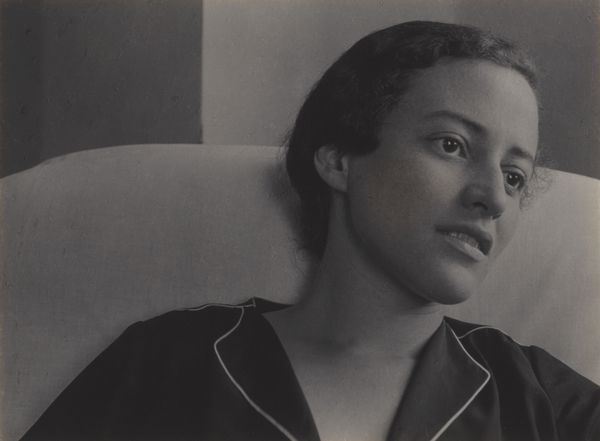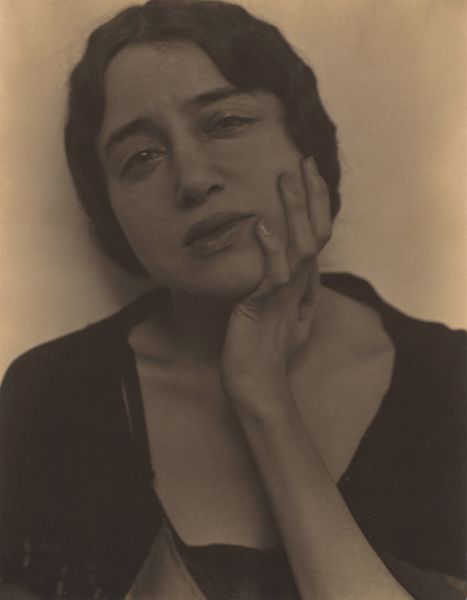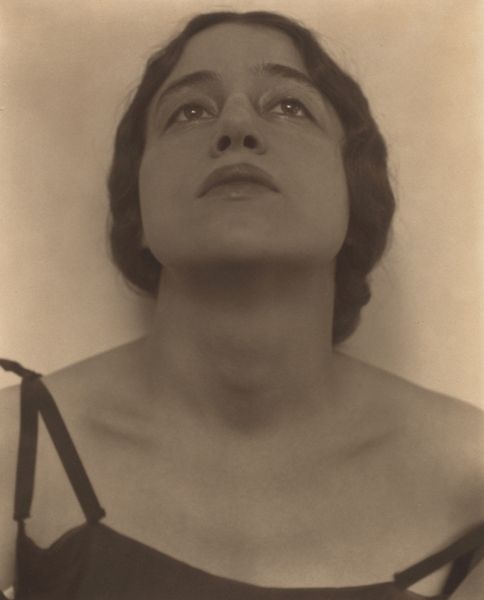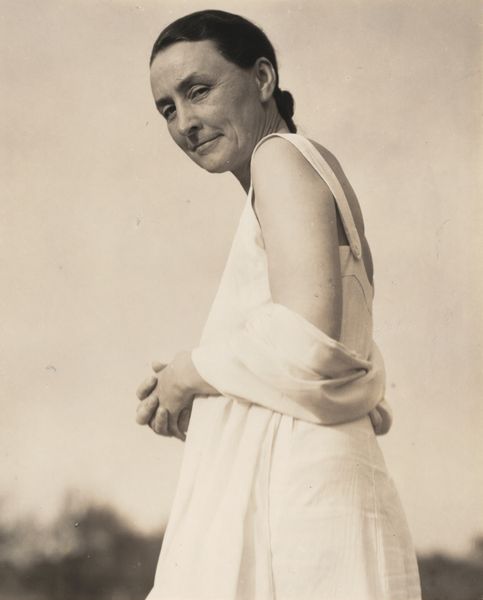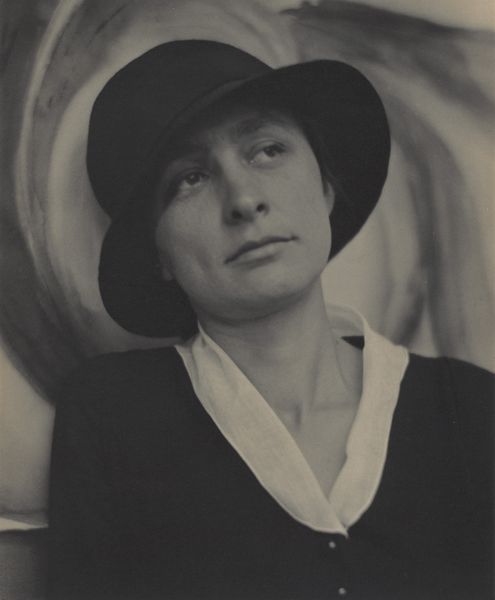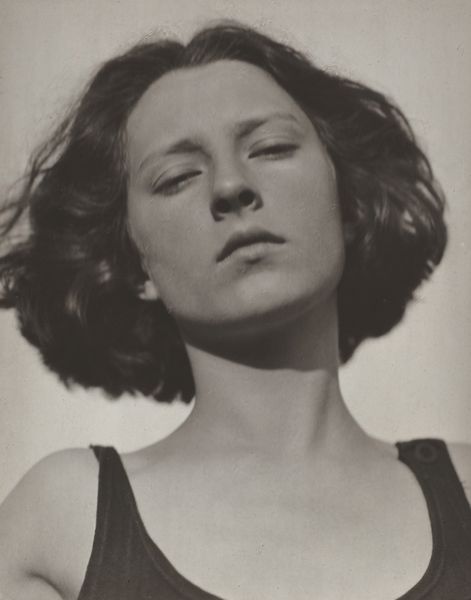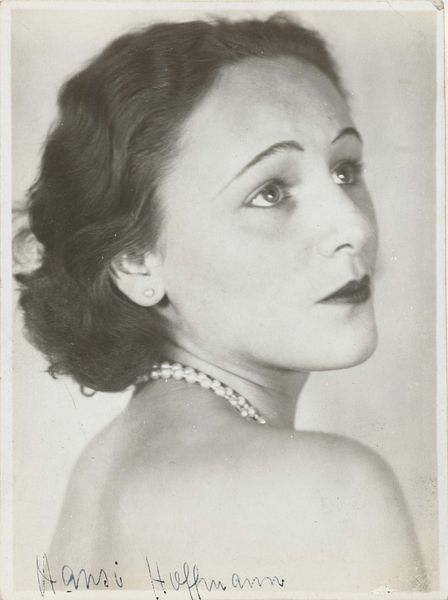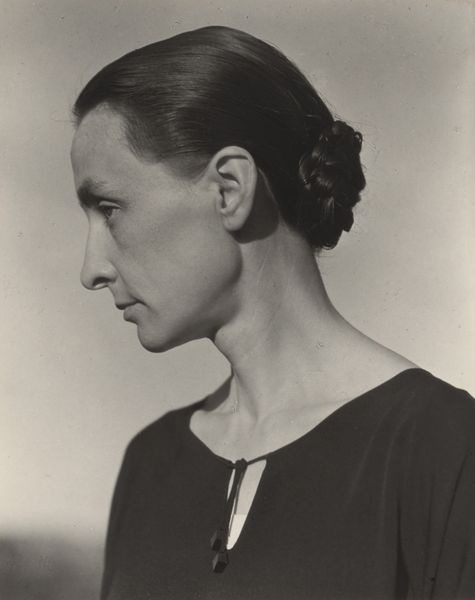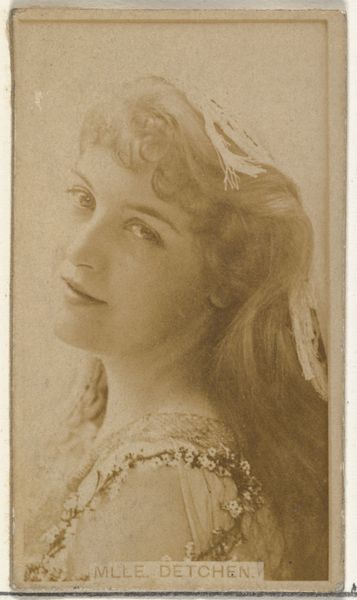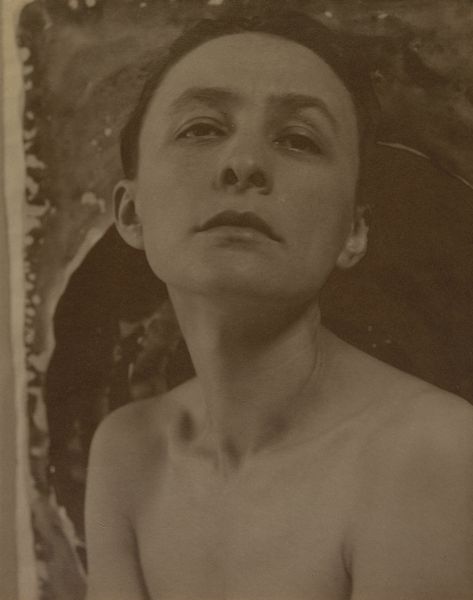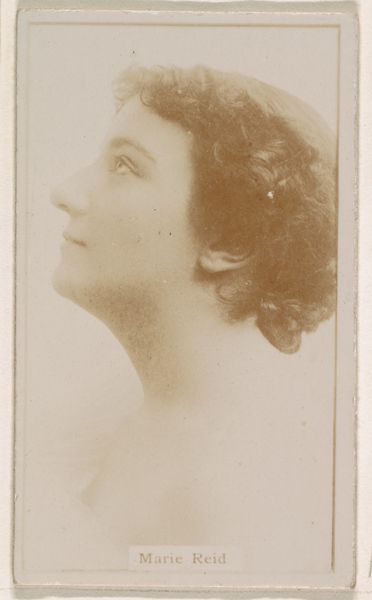
photography, gelatin-silver-print
#
portrait
#
self-portrait
#
pictorialism
#
portrait
#
photography
#
gelatin-silver-print
#
modernism
Dimensions: image: 23.5 × 18.9 cm (9 1/4 × 7 7/16 in.) sheet: 25.2 × 20.2 cm (9 15/16 × 7 15/16 in.) mount: 52.1 × 41.2 cm (20 1/2 × 16 1/4 in.)
Copyright: National Gallery of Art: CC0 1.0
Editor: Here we have Alfred Stieglitz's gelatin-silver print, "Eva Herrmann," created around 1920. I'm struck by its soft, almost dreamlike quality, and how intimate it feels. What draws your eye when you look at this photograph? Curator: Well, let’s consider the materials first. Stieglitz used a gelatin-silver print, a process that allowed for mass reproduction. However, his engagement wasn't purely mechanical. The soft focus, achieved through careful manipulation during the development, complicates this. Think about the labor involved—the careful balancing act between mechanical reproduction and artistic intervention. Editor: That's fascinating! I hadn’t considered that tension. So, he's using a process capable of mass production but employing techniques to individualize it? Curator: Exactly! It's not just about capturing an image; it's about imbuing it with a certain quality. And look at Eva Herrmann, her gaze, the fabric of her clothing. Consider the social context. Were these garments commercially produced, or homemade? Where were the materials sourced? Who benefited from that production? These details inform our understanding. Editor: That raises a really interesting point about the everyday objects depicted within the art itself! It challenges this idea of high art being divorced from the everyday production that surrounds us. Curator: Precisely. Stieglitz, in focusing on Herrmann and her presentation, invites us to think about the entire network of materials and labor that makes up the image and the world it represents. His act of making this print transcends being 'just' a photograph. What do you think Stieglitz intended to convey through these very specific material and production choices? Editor: I hadn't considered how much the photograph's meaning is wrapped up in those material and social choices! I see it now as a document, a moment captured, yes, but also a representation of early 20th-century production. Curator: Exactly, we’ve moved beyond the simple “who” and started digging into the "how" and "why." And that "how" ultimately shapes the "what" we see.
Comments
No comments
Be the first to comment and join the conversation on the ultimate creative platform.

